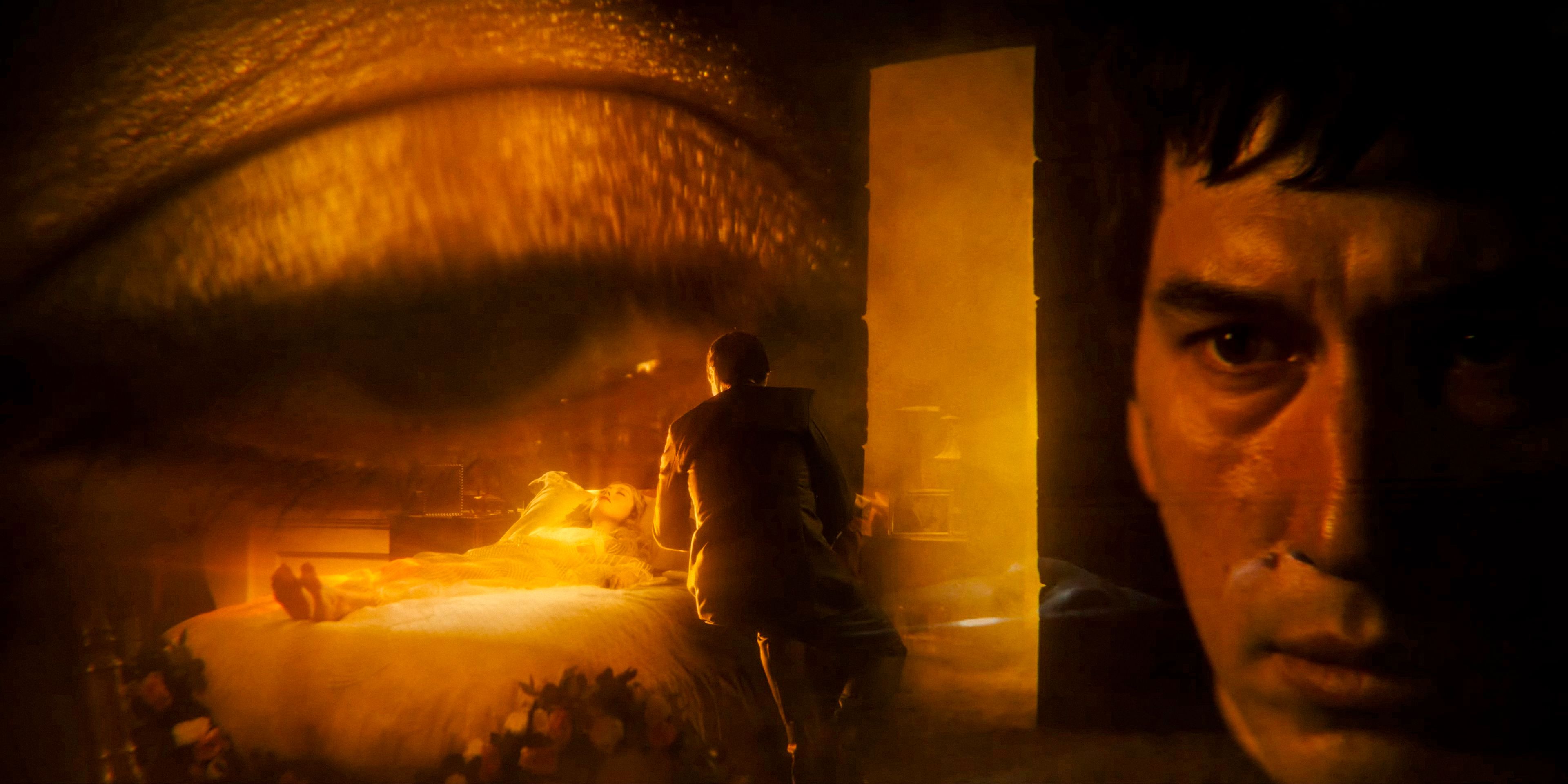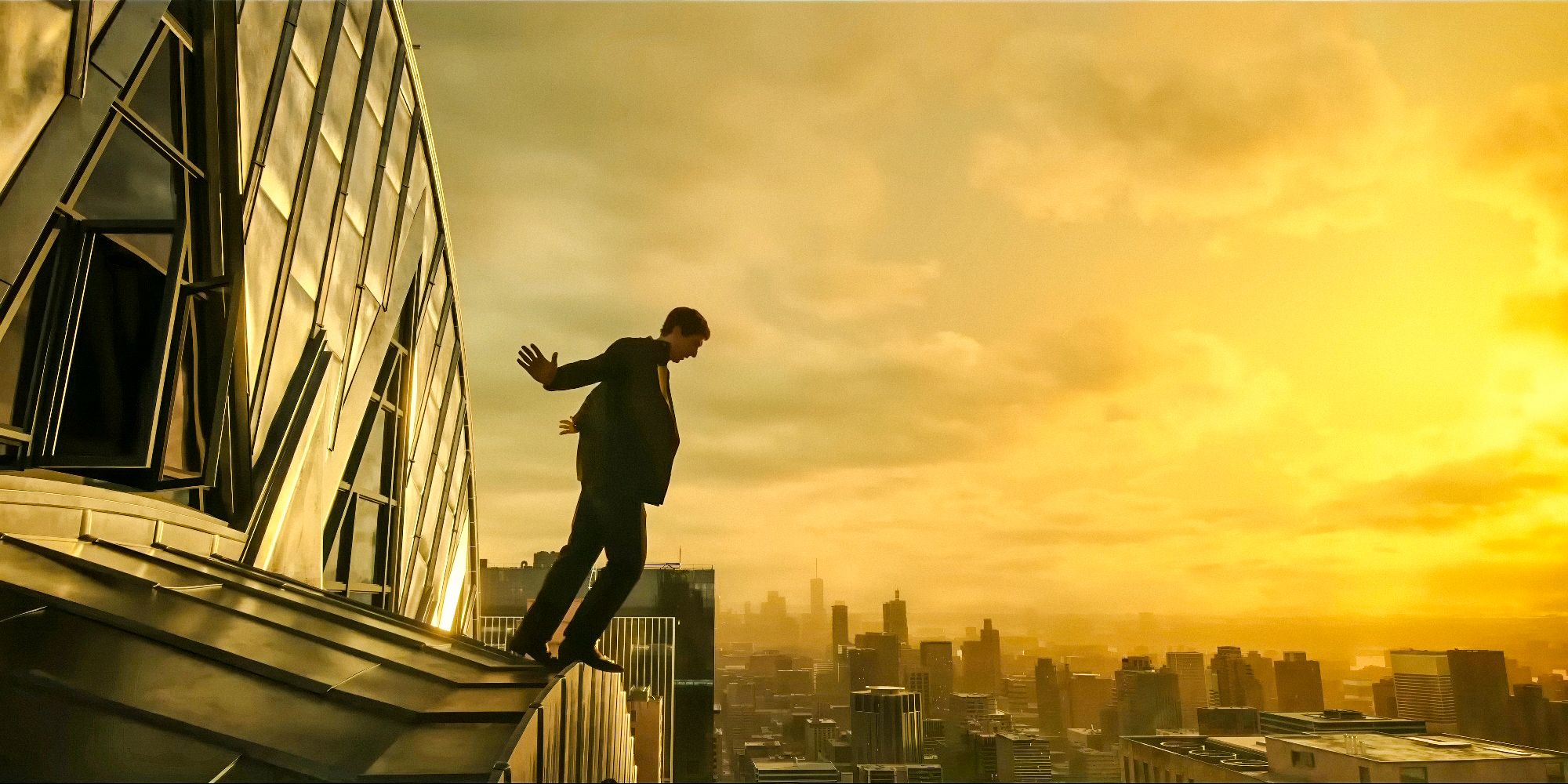WARNING: SPOILERS ahead for Megalopolis.
Adam Driver’s Cesar Catilina harnesses the miraculous power of Megalin in Francis Ford Coppola’s Megalopolis. After brewing a storm of controversy after Lionsgate released a trailer with fabricated reviews by real-life critics and a decade-spanning development process, Megalopolis was finally released in theaters on September 27, 2024. Legendary director Francis Ford Coppola spent $120 million of his own fortune to produce the film, even selling part of his profitable wine empire to bring his long-awaited vision to life. Driver leads the cast of Megalopolis alongside Aubrey Plaza, Nathalie Emmanuel, Giancarlo Esposito, and Shia LaBeouf.
While the plot of Megalopolis can be meandering and difficult to follow, one key component that is made crystal clear is the significance of Megalon, a magical substance that Cesar invented and plans to build his utopia with. The science behind Megalon isn’t exactly polished out or explained very well in the film but it is clear that Cesar uses it to do all sorts of things, such as defy the laws of physics, pause and manipulate time, and even make high-end, seemingly transparent apparel. In short, Megalon is a material unlike anything else on Earth with a composition based on ethereal knowledge and interdimensional force.
Cesar Creates Megalon After The Death Of His Wife
Megalon was born out of Cesar’s powerful love for Sunny Hope
Cesar is deemed a genius scientist when he somehow develops or harnesses the power of the mysterious substance known as Megalon. The source of Megalon comes from Cesar’s love for his fallen wife, who tragically died in a car crash. In this sense, Megalon can be equated to an invisible but vigorous power of a dream or a memory, some type of abstract notion that manifests through Cesar’s love and hope. It’s not necessarily clear why Cesar is the only person capable of harnessing or using Megalon, since surely some if not many other characters in the world of Megalopolis understand what it feels like to suffer, as Cesar did when he lost his wife, Sunny Hope Catilina.
At one moment in Megalopolis, it’s revealed that Cesar used Megalon to create a magical shrine of Sunny Hope lying in a bed. He visits her and kisses her incarnation, one that Emmanuel’s Julia Cicero cannot see. In this light, Megalon can be understood as Cesar’s artistic gift or stroke of genius, or even a visible representation of his connection to some type of higher power. It’s valid to consider that Cesar may have discovered Megalon through an emotional or even spiritual process that manifests through science and industry in the world of Megalopolis. Cesar seems to be the only one focused on the future, dreams, and the power of the mind, which may be why other characters cannot harness Megalon like he can.
Megalon Gives Cesar Power Over Time & Space
Megalon exists at the intersection of societal and creative power
Megalon’s narrative purpose is to demonstrate what immeasurable power can look like in the hands of a visionary with good albeit lofty intentions.
With the understanding that Megalon is, in a word, magical and ostensibly accessible only through Cesar’s passions and dreams, it’s interesting to examine how that results in Cesar’s ability to manipulate time and space. Without getting into the scientific and logical details of Megalon, many of which Coppola does not offer in Megalopolis, it’s evident that Megalon’s narrative purpose is to demonstrate what immeasurable power can look like in the hands of a visionary with good albeit lofty intentions. The film’s central conflict is between societal power, as determined by wealth and governments, and creative power, determined by talent and beauty. Megalon exists at the intersection of these two forces.
Cesar is able to control time and space not only because he wills himself to do so but also because he is inspired and driven to do so by his vision of the future. While this type of reasoning ends up creating many loose ends and plot holes in Megalopolis, the best way to engage with the film is through a philosophical lens with conceptual terms. This, of course, creates a great fallacy of Coppola’s epic fable by allowing his protagonist Cesar to defy the laws of the physical universe and daring not to even explain theoretically how Cesar is able to accomplish all of this. In this way, Megalopolis strives with bold exuberance to create its own version of reality.
Cesar Uses Megalon To Build Megalopolis
Megalopolis completely loses its plot when Cesar’s utopia is completed
Megalon represents the source and result of Cesar’s vision for the future but the mysterious substance seemingly has millions of other uses that Cesar doesn’t employ.
Throughout Megalopolis, Cesar often comes off as a tortured artist or poet archetype whose passion is architecture and industrial design. He sees himself as a great leader who, like Marcus Aurelius, can also teach others how to lead their own lives. He insists that his version of the future is what’s best for humanity and goes above and beyond to not only paint a picture of a new city but an entirely new world. If Megalon is the miraculous source of all this industrial innovation, and it’s sourced from his love, hope, and dreams, then Cesar must be some type of magician who can build an entire utopia based on the cosmic powers of his mind, heart, and soul.
Megalopolis completely loses its plot when Cesar’s utopia comes to fruition at the end of the film. Once a model made with spare tires and trash cans, the city of Megalopolis seems to magically appear as if it were generated by artificial intelligence in the existing city. Cesar destroys lots of old buildings in order to build his utopia, full of magical orb-shaped vehicles and florescent moving walkways, which angers many citizens. In the end, he builds his utopia and opens its doors for free as his lasting gift to the world. Megalon represents the source and result of Cesar’s vision for the future but the mysterious substance seemingly has millions of other uses that Cesar doesn’t employ.
Is Cesar The Only Person Who Can Use Megalon?
Cesar and his loved ones are the only ones who can harness (and resist) Megalon’s infinite powers
Cesar inexplicably loses his ability to control time partway through the film but is able to harness these powers again through his love for Julia. At the end of Megalopolis, after Julia and Cesar have a baby, it appears that the child is immune to Julia’s manipulation of time and space, hinting that Cesar’s heir is even more powerful than he is and perhaps is infused with Megalon himself. Both Megalopolis and Cesar’s baby were made from the same source, his hopes and dreams, which are physically manifested as the substance Megalon. Because the city is portrayed as a vision of a future world, perhaps Cesar’s child is meant to represent the future of humanity.
With all this in mind, it does appear that only Cesar and his loved ones can harness the power of Megalon. It is never determined in the film whether citizens of Megalopolis will be able to access the powers of Megalon as well, which would be a major question that a potential sequel would be forced to answer. Ultimately, Cesar is both the inventor and keeper of the seemingly infinite capabilities of Megalon, choosing to create a better world only as he sees fit. The real-world application of Megalon is convoluted in Megalopolis considering how the miraculous substance comes from such a personal and emotional place within Cesar, as opposed to scientific reason and application.


